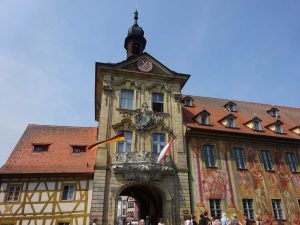Germany is known for its numerous tourist spots and beautiful medieval towns. Some of the commonly visited places are Nuremberg, Heidelberg, and Rothenburg ob der Tauber. Since these three are heavily promoted and recommended by travel books and other resources, people miss the opportunity on finding this incredible, hidden gem, called Bamburg Germany.
Bamberg is pure eye candy. It is known for its many Catholic churches, authentic medieval setting preserved by very minimal damages from World War II, home to a wide variety of locally brewed beers, the imperial couple’s tomb, and the only place where a pope is buried north of the alps. This article will feature reasons why Bamberg has become a UNESCO World Heritage Site.
According to many travel bloggers and enthusiasts, strolling around Bamberg is best done during the day. The peaceful silence and vibe can be most enjoyed during the morning, around 8 to 9am. The picturesque sights and architecture of the town will allow you to enjoy lengthy and relaxing walks throughout the town.
Bamberg Church (locally known as Bamberger Dom) is one of the most artistically crafted churches ever. It is one of the world’s few imperial cathedrals, where the tomb of imperial couple King Henry II and Cunigunde of Luxembourg reside. They are known for their godly acts as they received sainthood. Another grave located in the church is Pope Clemence II. Formerly named bishop Suidger of Bamberg, he was elected as pope in 1046. The cathedral encountered a few mishaps, having been destroyed by fire twice on two occasions. Damaged areas were repaired in 1237 and the building is still standing tall today.
The Old Court, just nearby the Bamberg Church, was originally a fort. Alte Hofhaltung, as it was locally known, was later converted to a home for bishops, then eventually became Bamberg’s largest museum.
The Altes Rathaus or the Old Town Hall, is easily the most attractive building in Bamberg. One side of the wall is painted with gorgeous artwork. Its location where it was built is also interesting, as it rests in the middle of the Regnitz River, connected by bridges on each side – truly an interesting piece of architecture.
The Klein Venedig is a small area where people could eat and socialize. Its name translates to “Little Venice”. The best part of his place is it provides a lovely view of the town as you sit down and enjoy a cup of coffee. Last but definitely not the least, Bamberg is famed for its uniquely brewed smoked beer. This can be found in The Schlenkerla, one of the town’s famous breweries.
Bamberg can be easily visited by taking a German river cruise through the Main-Danube Canal. For the best experience, the AmaWaterways line is recommended. Their Europe’s Rivers and Castles cruises between Nuremberg and Luxembourg on the AmaDante ship. It offers trips for as low as $2,999 and guarantees a luxurious experience while cruising 3 rivers of Germany.
For more information or to book a cabin, please contact: jan@europeanbarging.com or 888-869-7907. Barge and River Cruise Specialist.

